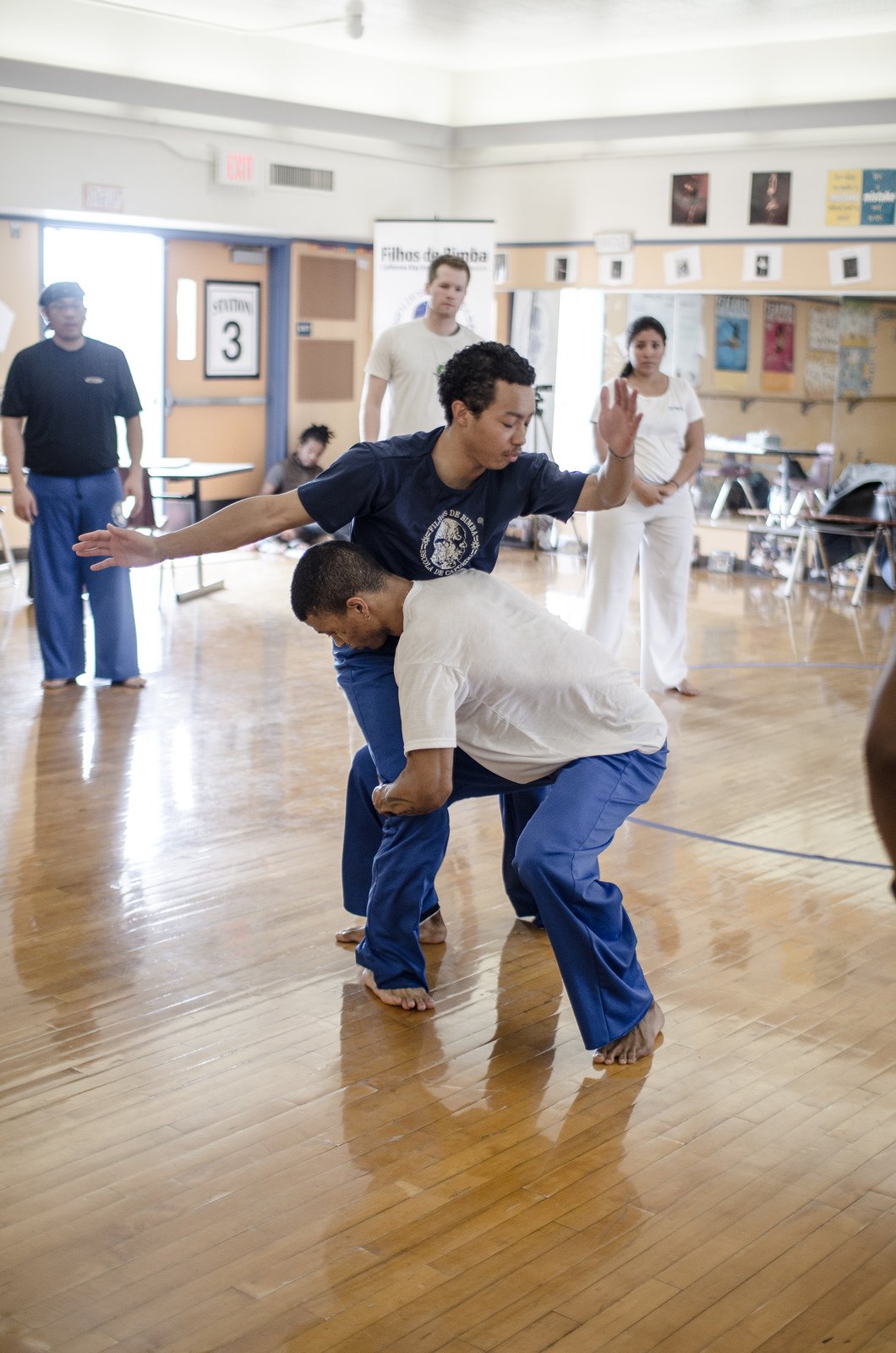
Capoeira Regional was developed by Manoel dos Reis Machado, better known as Mestre Bimba. Capoeira Regional is not only an exercise in self-defense, but also in self-discipline, that can fill the philosophical, cultural and musical needs of the modern world. It develops physical alertness, self-control, physical conditioning, adding value to self-esteem, conflict management, strategy and mastery of the body.
Mestre Bimba believed that capoeira had become too folkloric and less efficient. Already outlawed and facing extinction, Mestre Bimba developed a new methodology, philosophy and principles for capoeira, rescuing old movements and incorporating long standing African traditions to revitalize the art form.
He believed capoeira was a cooperative fight, with little emphasis on competition. The stronger player is always responsible for the weaker player and helps them to excel in their own fighting techniques. Beyond self-defense, he also saw capoeira as a means of self-control and education, believing what is learned in the academy and practiced in the roda can be applied in life.
He introduced a systematic teaching method called The Sequência, an eight-part sequence of 17 basic attack and defense movements for quickly and easily capoeira to new practitioners.
Capoeira Regional

The Methodology
Mestre Bimba teaching a student the ginga
The Ginga is the fundamental footwork of Capoeira
The Admission Exam is an evaluation of basic capoeira movements to identify a student’s ability
The Sequência is an 8-part sequence of the 17 basic attack and defense movements in Regional
Berimbau rhythms for the roda
The Movements: broken down into several categories, including
Traumatizantes - various strikes
Desequilibrantes - unbalancing sweeps and take-downs
Projeções - various throws
The Centura Desprezada is a sequence of projecting movements for advanced students
Specialization Courses:
Especialização I – Emboscada - a specialization course where the student learn capoeira resources for self defense and applies them in a forest ambush. Upon completion of the course, the student is presented with the lenço vermelho – the red scarf
Especialização II – Curso de Arma - a specialization weapons defense course. Upon completion of the course, the student is presented with the lenço amarelo – the yellow scarf

Traditions and Rituals
Hold the hands when teaching the ginga
A chair used for training
The Charanga is the traditional Regional orchestra, composed of one berimbau and two pandeiros.
The Toques are rhythms played during capoeira games. The most important Capoeira Regional toques are ‘São Bento Grande’, ‘Banguelinha’, ‘Iúna’ and the ‘Hino da Capoeira Regional’
Songs are categorizes as Quadras and Corridos
The Batizado, also called “Cair No Aço,” is the first game that a beginner plays to the sound of the berimbau
The Festa do Batizado is the initiation ceremony where the student receives their nome de guerra, their war name
The Formatura is a celebration ceremony for the completion of specific courses. Upon completion of the course, the student is presented the the lenço azul – the blue scarf
O “Esquenta Banho” – A game a students play without the sound of the berimbau where they can test their combative abilities.
A chair used for training
Festa de Batizado 2022 with Piranha and Risadinha

The Principles
Ginga constantly while playing
Always esquiva (dodge and evade) the opponents attacks. Do not resist
Always play close to your partner
All movements must have a purpose
Always keep at least one base on the ground at all times
Obey the rhythm of the berimbau
Respect when a player can no longer defend from an attack
Protect your partner’s physical and moral integrity
Mestre Garrincha giving a workshop








